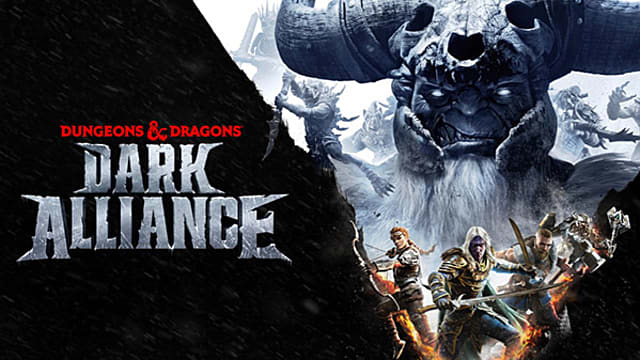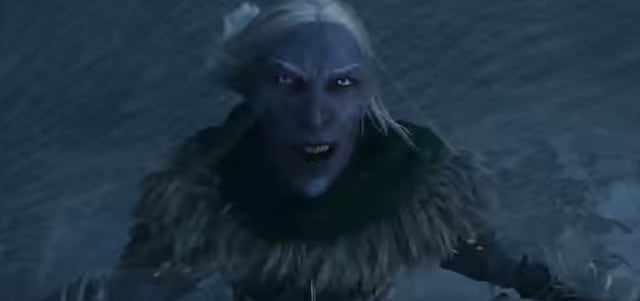There’s no question that the Baldur’s Gate 3 announcement in June 2019 started the hype train, but that long-awaited sequel has no release window at this time. Barring any sudden surprise developments, the next game fans will most likely see is Dark Alliance, due to arrive in Fall 2020.
The Dark Alliance announcement at The Game Awards in mid-December garnered a mixed reaction to be sure. The teaser has an odd Go Pro camera style applied to it and the slightly off-kilter character models have left more than a few long-time Forgotten Realms enthusiasts scratching their heads.
Considering we underwent the monumental task of ranking every single D&D game from best to worst awhile back, it should be clear we’ve been fans of the system through its various incarnations over the decades. Whether it’s “garbage” or not, we’re going to play Dark Alliance. But only a few days after the title reveal, there’s already a nagging feeling that this isn’t the direction in which the franchise should go.
Why Action Hack ’n Slash isn’t the Way to Go
We’ve been here before, and it wasn’t pretty.
Frankly, the latest D&D game reveal felt a bit like if Bethesda decided the next Fallout game should be Brotherhood of Steel 2 (ugh, hopefully, I didn’t just give them any ideas for the follow-up to Fallout 76).
While the Dark Alliance entries on the PS2 obviously had fans, they weren’t really D&D games. They were a pale shadow of the classic Infinity Engine RPG titles like Baldur’s Gate. We haven’t seen any actual Dark Alliance gameplay yet, but the cinematic trailer makes it look like we’re getting Vermintide with Drizzt, Wulfgar, Catti-Brie, and Bruenor.
The issue isn’t that there’s no room for new 4-player co-op vs enemy wave games. Fans have been champing at the bit for a legitimate Left 4 Dead 3 for years now, after all (and the recent GTFO doesn’t do a bad job of scratching that it). The problem is that it seems unlikely to work well in the Forgotten Realms using D&D mechanics as a springboard.
The first tip-off that a catastrophe may be brewing popped up when the president of Wizards Of The Coast wasn’t willing to answer if Dark Alliance will be a AAA game or somewhat of an indie, stating it’s all “in the eye of the beholder.”
We are less amused by this joke than you think we are. That guy in the upper right? That’s the face I’m making right now.
Awesome beholder pun aside, if Dark Alliance is going to be a highly polished, top tier, AAA game, it would have been very easy to say so. The coy notion that some people will think it’s AAA and others won’t makes it clear we should temper our expectations.
There are strong reasons to be concerned about a mid-tier action game set in the Forgotten Realms. The D&D franchise ditching its core RPG elements to go an action route has a long and illustrious history of being truly, horrendously awful.
In 1988, the Commodore 64 title Heroes Of The Lance seriously gave the infamous E.T. a run for its money in the “worst PC game adaptation” category. The more recent Daggerdale and Demon Stone are some of the most lackluster hack ’n slash titles to ever hit consoles.
Can We Forget the Forgotten Realms Already?
Ugh, you again?
Quality and game mechanics aside, the biggest issue surrounding the Forgotten Realms is that it is laughably over-saturated. Wizards Of The Coast has relied on its wide appeal as the basic fantasy setting — nearly everyone knows names like Drizzt — for far too long. It’s absolutely time for a change.
While he still has his die-hard groupies, I was pretty burned out on cheesy, unkillable Drizzt as the face of the Forgotten Realms by the time I was 19. Fast forward another 14 years and he’s somehow still the go-to fantasy D&D character — despite having remained just as obnoxiously uninteresting over that time period.
There are dozens of other locations in the Forgotten Realms besides Icewind Dale and the Sword Coast that are consistently ignored in any given D&D video game adaptation. If you go even further and move beyond Faerun altogether, there’s simply a staggering amount of material to dive into across any of the other campaign settings from D&D history.
By my count, there have been a whopping 50 video game entries in the Forgotten Realms if you include mobile titles and major expansions to games like Neverwinter Nights 2. By contrast, there have been a paltry 19 D&D video games across every other campaign setting combined.
Considering that Planescape: Torment is still one of the most lauded RPGs in the history of video games, it’s absolute insanity that Wizards never took another crack at that setting in a digital format. Granted, many developers might not want to follow that critically acclaimed gem and face backlash if they don’t absolutely knock it out of the park, but Planescape isn’t the only campaign setting out there either.
With the right promotion, a return to Krynn and the Dragonlance setting could easily send the hype machine go into overdrive. That universe hasn’t seen a proper video game since the gold box SSI days in the early ’90s.
If Wizards is absolutely dead set on changing the formula from an RPG to another style like it appears they are with Dark Alliance, why not go with Birthright instead?
Realm management and large scale combat are baked right into the setting, making it ripe for a 4X or turn-based strategy game with RPG elements. Why let major series like Civilization and Age of Wonders — or tabletop crossovers like Gladius — get all the glory?
Flip the genre spectrum and it’s somehow been more than 20 years since a game launched in the Ravenloft campaign setting. There’s more than enough room there to either offer a straightforward horror game with D&D characters or inject more horror and undead creatures into an RPG.
The options don’t remotely end there either, as there’s still more game styles to mine from the earlier days of D&D, like a sci-fi mashup with Spelljammer.
Why are we still fighting orcs and goblins on the Sword Coast when we could be battling illithids and neogi in space?
Mass Effect and KOTOR were both beloved by RPG fans, and there’s no reason Spelljammer couldn’t get thrown into that list of names.
If there’s one setting that is most ready for a return to PC gaming, though, it has to be Dark Sun.
The current entertainment, social, and political climate is wildly ripe for a gritty Dark Sun game.
A developer could easily dive into the political- and social-commentary pool, making a title that would be well received right now. Dark Sun is a setting about the working class toiling under tyrants amid rampant racism. Did I mention that a global environmental catastrophe has struck?
Even if Wizards of the Coast wants to avoid that sort of on-the-nose commentary — and of course they do; this is the company that forced Neverwinter Nights 2 to get rid of a brothel — there’s still plenty of reason to go with Dark Sun. Grim and dark are very much “in” right now.
Watchmen and Game Of Thrones were huge successes that took the fantasy and sci-fi worlds by storm. The Boys might have put a comedic spin on things, but the success of that series further makes it clear that comic book fans will show up in droves for a story full of hard choices and no good guys.
Dark Sun is also one of the least saturated settings in D&D history. There’s been a grand total of three games in the series: Shattered Lands in ‘93, Wake of the Ravager in ‘94, and an early attempt at an MMORPG called Crimson Sands that lasted from ‘96 to ‘98.
Seems like a perfectly good time for a new slave uprising
With news arriving that multiple games besides Dark Alliance and Baldur’s Gate 3 have been greenlit for the coming years, it’s clear that D&D will get the chance to swing seven or eight times and (hopefully) hit something.
Based on the last decade of output, I’m not personally expecting any of them to be home runs, but with a little luck, maybe we’ll at least get something memorable.
What did you think of the Dark Alliance announcement trailer, and what style of D&D game would you like to see come out next? Sound off in the comments below!






